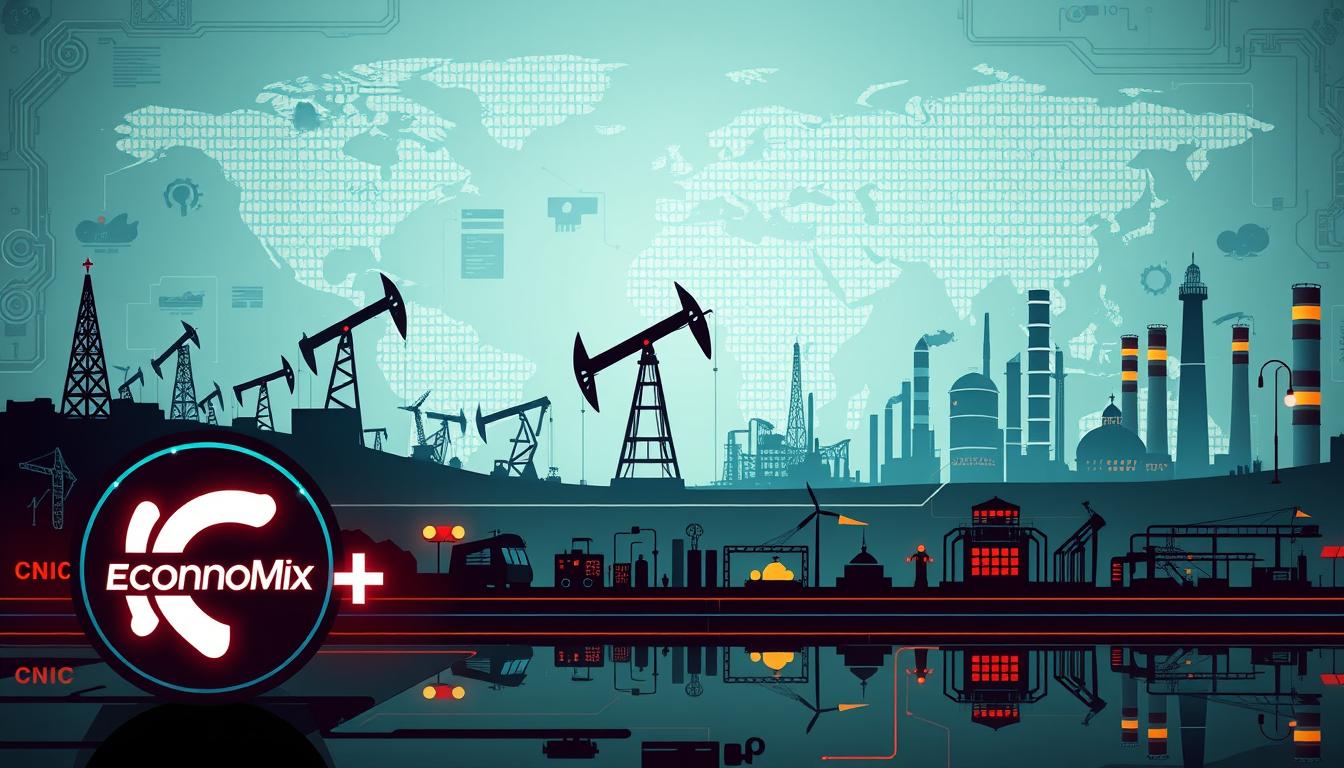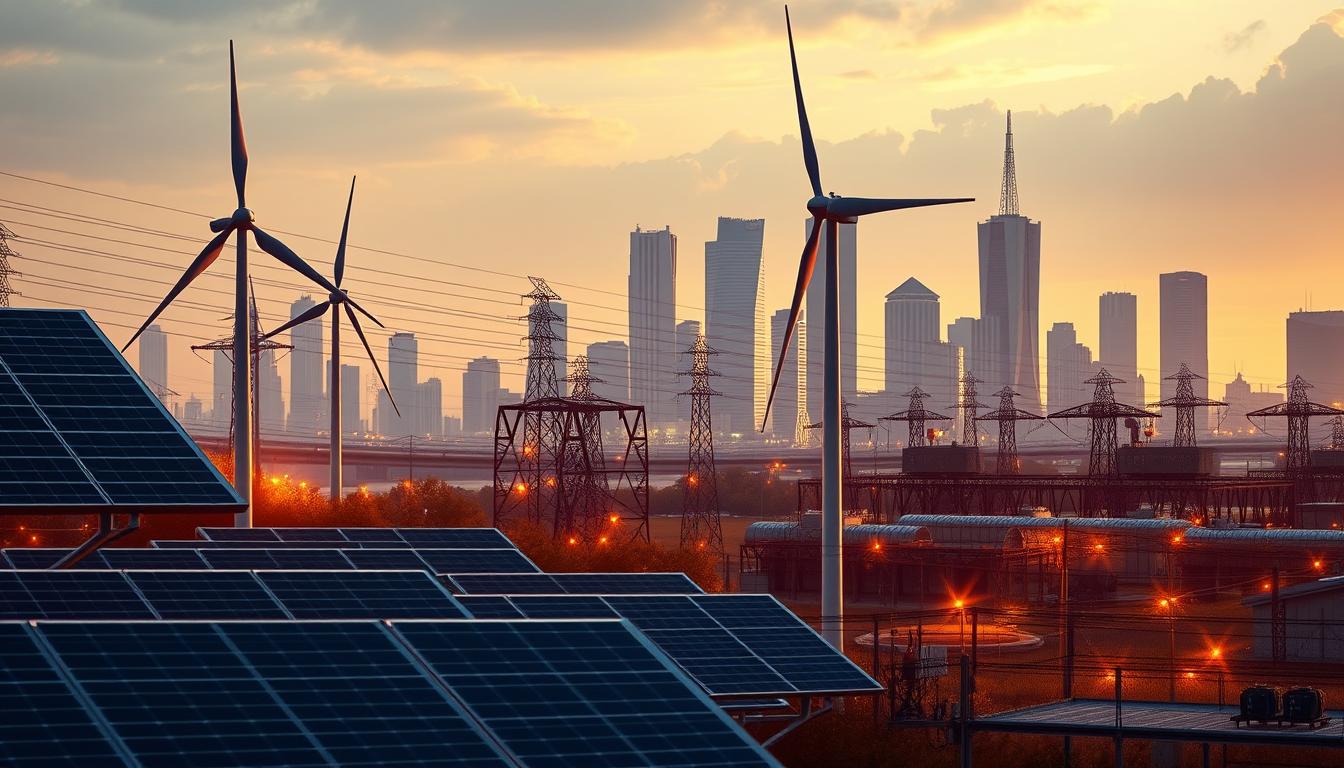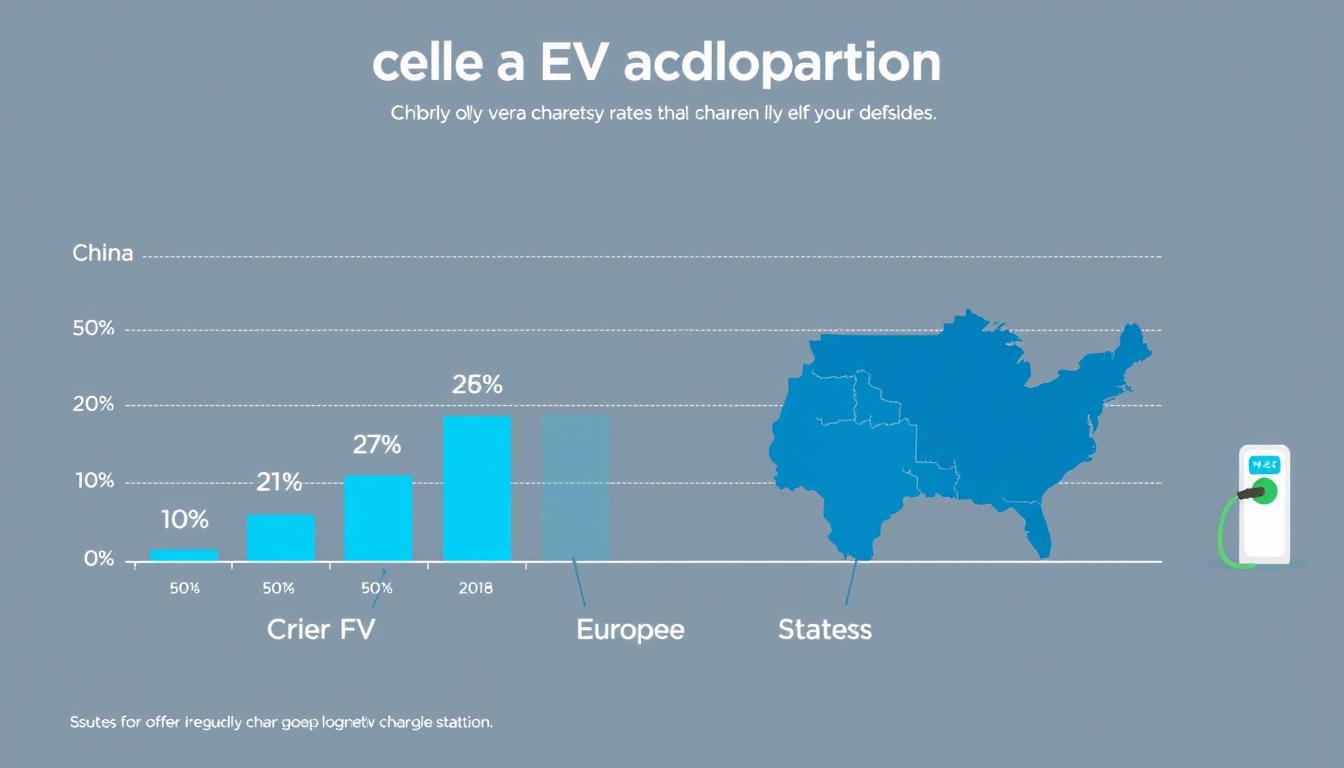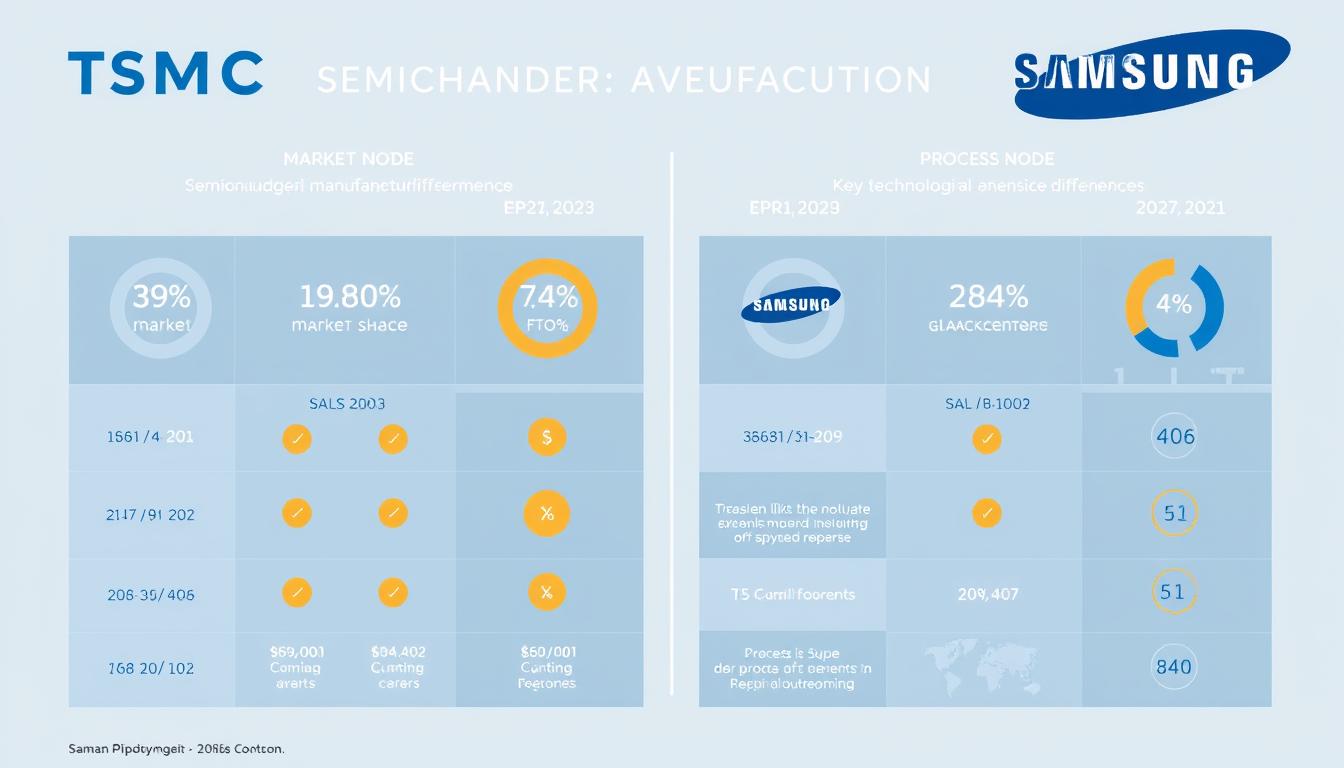How does a global energy giant pivot to safeguard a nation’s future? As demand for crude oil surges worldwide, one of Asia’s largest producers faces a critical crossroads. The China National Petroleum Corporation (CNPC) isn’t just adapting to market trends—it’s rewriting its playbook to address geopolitical risks and domestic energy vulnerabilities.
With imports now accounting for over 70% of the country’s crude oil consumption, reliance on foreign supplies poses a strategic challenge. Production limits at home—hovering near 3.9 million barrels per day—struggle to meet rising industrial and consumer needs. This imbalance fuels a broader mission: aligning energy policies with national security priorities.
The corporation’s evolving strategy reflects a world where energy independence and defense readiness are inseparable. By diversifying into defense-linked projects, CNPC aims to secure supply chains and reduce exposure to global market volatility. This transition isn’t just about profits—it’s about power, stability, and long-term survival in an uncertain era.
Key Takeaways
- CNPC’s strategic shift addresses China’s growing dependence on imported crude oil.
- Domestic production caps intensify pressure to innovate beyond traditional energy sectors.
- Geopolitical risks drive integration of defense priorities into corporate planning.
- Global demand for oil exceeds 100 million barrels per day, heightening competition.
- Energy security now directly influences national defense strategies.
Introduction to CNPC China’s Strategic Shift
Once a symbol of resource independence, Asia’s largest energy producer now navigates uncharted waters. Surging industrial demands and geopolitical tensions have reshaped priorities for state-owned enterprises. Where pipelines once dominated strategy, defense partnerships now emerge as critical safeguards.
Background and Context of Energy Evolution
Decades ago, domestic fields supplied nearly all crude needs. Today, over 70% arrives via tankers from volatile regions. Production plateaus at aging onshore sites forced exploration of national offshore oil reserves. Projects like those managed by China National Offshore underscore this pivot toward maritime resources and highlight the importance of investment in the oil and gas industry.
| Period | Domestic Output (Million bpd) | Imports (% of Total) | Key Initiatives |
|---|---|---|---|
| 2000-2010 | 3.2 | 42% | Onshore expansion |
| 2011-2023 | 3.9 | 72% | Offshore & defense integration |
Objectives and Scope of Industry Analysis
The latest industry report highlights three priorities: securing oil and gas transport routes, modernizing extraction tech, and aligning with naval defense networks. These measures aim to buffer against supply disruptions in contested regions like the South China Sea.
Key initiatives include partnerships with China National Offshore entities to develop deepwater drilling capabilities. Such collaborations address both energy gaps and strategic vulnerabilities exposed by global market fluctuations.
Overview of China’s Energy Landscape
Navigating a tightrope between dwindling resources and soaring needs, the energy sector faces unprecedented pressures. Traditional extraction hubs like Daqing—once symbols of self-sufficiency in the china national petroleum landscape—now grapple with declining yields and aging infrastructure. These constraints force operators to push technological boundaries while scrambling for alternative oil and gas solutions in this challenging region.
Domestic Production Challenges and Resource Limitations
Major fields face depletion rates exceeding 5% annually, with extraction costs doubling since 2015. Aging equipment struggles to access complex reserves trapped beneath deeper rock formations. China National operators now spend 40% more per barrel compared to offshore projects managed by international peers.
Technological gaps compound these issues. Only 35% of domestic reserves meet current recovery efficiency standards, leaving billions of barrels stranded. Foreign partnerships aim to bridge this divide, but progress remains slower than demand growth.
Impact of Global Energy Demand
Worldwide consumption now tops 102 million barrels daily, squeezing suppliers and inflating prices. This surge strains import budgets, particularly for nations reliant on volatile shipping routes. Chinese oil imports jumped 12% last year alone, exposing supply chains to geopolitical shocks.
Market volatility forces tough choices. Rising crude costs divert funds from renewable investments, complicating long-term energy mix goals. Strategic reserves buffer short-term disruptions but can’t offset structural deficits in domestic production capacity.
Historical Context of CNPC and Chinese Oil Policies
The story of China’s energy sector reads like a playbook for navigating global shifts. For decades, domestic oil production and gas resources fueled rapid industrialization, with state-owned giants like CNPC operating as symbols of self-reliance. By 1993, this narrative flipped—the nation became a net importer of crude oil, a turning point that reshaped policies and corporate strategies in the oil and gas sector.

Reforms in the 1990s marked the first major pivot. Government directives prioritized securing overseas reserves and modernizing extraction methods. CNPC expanded partnerships in Central Asia and Africa, laying groundwork for today’s global energy supply chains. Domestic fields, once producing 3.2 million barrels daily, began showing strain as demand outpaced discoveries.
Early 2000s policies accelerated change. Subsidies for crude oil imports surged, while aging onshore wells faced stricter efficiency targets. These moves forced CNPC to balance dwindling local output with rising reliance on foreign suppliers—a tension that still defines its operations.
Today’s strategies echo past adaptations. As oil production plateaus at home, the focus shifts to securing maritime routes and diversifying sources. This continuity underscores a core truth: in global energy markets, yesterday’s challenges often preview tomorrow’s solutions.
Key Drivers Behind the Shift
Three converging forces are reshaping priorities for Asia’s energy leaders. Reliance on foreign oil imports now exceeds 72% of total consumption, creating vulnerabilities in unstable markets around the world. Meanwhile, domestic extraction costs for chinese oil and gas have surged 60% since 2015 compared to global averages, highlighting the urgent need for development and exploration of local resources.

Security Imperatives and Economic Pressures
Geopolitical tensions expose critical weaknesses. Over 80% of crude shipments pass through contested sea lanes, threatening supply continuity. “Energy arteries are now battle lines,” observes a recent national petroleum security report. This reality forces strategic realignments beyond simple cost calculations.
Domestic production struggles to keep pace. Aging fields yield just 3.9 million barrels per day—insufficient for industrial demands growing at 5% annually. Import bills now consume 1.8% of GDP, diverting funds from technological modernization.
Technological and Operational Constraints
Traditional extraction methods hit hard limits. Only 29% of existing reserves can be tapped with current technology, leaving 71 billion barrels stranded. Deepwater drilling and shale recovery require expertise that national petroleum firms are racing to acquire.
Operational costs compound these challenges. Producing one barrel per domestic well costs $52—triple Middle Eastern rates. These inefficiencies accelerate the push toward defense-integrated solutions offering dual security and energy benefits.
Market and Geopolitical Influences
Global energy flows increasingly pivot around Middle Eastern oil and gas fields. Over 45% of china oil total crude imports now originate from this region, creating complex interdependencies. Strategic partnerships with Gulf nations now anchor supply chains vulnerable to regional tensions in this oil-rich region.

Role of Middle Eastern Oil Dynamics
Recent pipeline expansions reveal shifting priorities. The offshore oil corridor stretching from Basra to Shanghai handles 9 million barrels per day—enough to power 150 million vehicles daily. U.S. naval presence near Hormuz Strait adds friction, with 30% of global tanker traffic passing through this chokepoint.
“Control energy arteries, control national destiny”
Volatility drives countermeasures. Strategic reserves now stockpile 90 days’ worth of imports, while offshore oil projects diversify sourcing. Below table illustrates key suppliers and risk mitigation strategies:
| Supplier | Barrels per day | Risk Factor | China’s Response |
|---|---|---|---|
| Saudi Arabia | 1.8 million | Political instability | 25-year supply pact |
| Iraq | 1.2 million | Pipeline attacks | Private security contracts |
| UAE | 900,000 | Shipping delays | Port investments |
These moves aim to stabilize china total energy intake despite regional uncertainties. New offshore oil terminals in Pakistan and Myanmar bypass vulnerable sea lanes, rerouting 15% of crude flows away from contested waters.
Market pressures amplify urgency. With global demand hitting 104 million barrels per day, suppliers wield unprecedented leverage. Recent price spikes forced accelerated investment in alternative corridors—a geopolitical chess game where energy security dictates every move.
Global Energy Trends and Their Impact on Chinese Strategies
Energy markets are undergoing a seismic transformation, rewriting the rules of resource security. Breakthroughs in extraction technologies now enable access to reserves once deemed unreachable, reshaping supply dynamics globally. These shifts force countries and companies to rethink long-term strategies amid fluctuating demand for oil and gas, and geopolitical uncertainties over time.

Growth of Unconventional Oil and Future Projections
Unconventional methods—like shale fracturing and deepwater drilling—now account for 18% of global crude output. By 2030, this share could double as producers tap into national offshore reserves and tight rock formations. Below table illustrates projected growth across key regions:
| Extraction Method | 2030 Projection (Million bpd) | Key Regions | Technology Focus |
|---|---|---|---|
| Shale Oil | 12.4 | Americas, Asia | AI-driven fracking |
| Deepwater | 9.1 | National offshore zones | Robotic drilling |
| Oil Sands | 5.7 | Canada, Siberia | Emission reduction |
Domestic oil fields face mounting pressure. Current projections show demand reaching 17 million barrels per day by 2035—outpacing local production by 6 million. This gap forces reliance on imports despite rising maritime security risks.
“Unconventional reserves aren’t just supplements—they’re becoming central to energy sovereignty.”
Strategic planners now prioritize dual-use technologies. Enhanced recovery systems for domestic oil reservoirs now integrate military-grade surveillance to protect critical infrastructure. These hybrid solutions address both energy deficits and security vulnerabilities in contested regions.
CNPC’s Diversification Strategy
Global energy leaders are rewriting playbooks through bold territorial expansions. One state-backed titan now operates drilling rigs in 32 countries while forging alliances with defense contractors. This dual approach merges resource acquisition with infrastructure protection—a blueprint for surviving modern market storms. By diversifying their operational footprints, these leaders not only enhance their access to vital energy resources but also strategically position themselves to mitigate risks associated with geopolitical instability.
The partnerships formed with defense contractors serve a dual purpose: ensuring the safety of energy infrastructure and leveraging military technology to safeguard operations in volatile regions. This proactive stance is essential as competition for resources intensifies globally, prompting energy firms to adopt more sophisticated strategies to secure their interests and maintain market dominance.
Cross-Border Resource Networks
Recent ventures reveal calculated risks across three continents:
- Acquisition of Brazil’s deepwater exploration rights covering 8,000 square miles
- Joint refinery project with Middle Eastern partners securing 400,000 barrels daily
- Military-backed pipeline security deals in Central Asian transit corridors
These moves stabilize supply chains while embedding operational assets within allied nations. A 2024 industry report notes: “Energy giants now function as geopolitical chess pieces, securing resources while advancing national interests.”
Capital Deployment in Growth Markets
Emerging economies receive 68% of recent foreign investments. Strategic priorities emerge in this regional breakdown:
| Region | Project Type | Strategic Value |
|---|---|---|
| Africa | Port-terminal networks | Bypass maritime chokepoints |
| Southeast Asia | LNG partnerships | Diversify energy mix |
| Latin America | Shale concessions | Leverage fracking expertise |
Such deployments reduce dependence on single-region suppliers. They also create reciprocal trade relationships—energy exports for infrastructure access—that reinforce long-term market positions.
The corporation’s playbook now treats energy projects as multi-purpose tools. Each overseas facility serves dual roles: boosting production capacity while establishing strategic footholds in contested regions. This evolution transforms traditional oil companies into hybrid entities balancing commercial and national security objectives.
What drives CNPC China’s shift from oil to defense
Corporate strategies now mirror battlefield tactics in securing vital resources. Heightened security concerns dominate boardroom decisions as supply routes face unprecedented threats. Over 80% of maritime crude shipments pass through regions experiencing military standoffs or piracy surges.
- Hardening port facilities against cyber-physical attacks
- Deploying surveillance networks across critical pipeline corridors
- Training rapid-response teams for supply chain disruptions
Global tensions amplify these measures. A 2024 defense white paper states:
“Energy infrastructure protection now requires military-grade coordination between public and private sectors.”
The table below illustrates evolving risk profiles and countermeasures:
| Threat Category | 2020 Incidence | 2024 Mitigation |
|---|---|---|
| Maritime Blockades | 12 reported | Naval escort partnerships |
| Cyber Intrusions | 47 attempts | AI monitoring systems |
| Pipeline Sabotage | 9 incidents | Drone patrol fleets |
These adaptations address vulnerabilities exposed by recent world events. Shipping lane disruptions during regional conflicts slashed crude deliveries by 18% last year alone. Such shocks accelerate defense-focused operational overhauls.
Domestic priorities reinforce this shift. Aging infrastructure in key industrial zones requires enhanced physical protection alongside technological upgrades. The fusion of energy and defense planning creates layered safeguards against both market volatility and geopolitical instability.
Technical and Operational Shifts in Oil Production
Deep beneath turbulent waters lies the next frontier for energy security. Offshore fields now account for 34% of domestic crude output, but extracting these reserves tests both engineering limits and budgets. The complexities of offshore drilling are compounded by the need for advanced technology and skilled labor, as well as the inherent risks associated with operating in such challenging environments.
Aging refineries struggle to process heavier grades from deepwater sites, creating bottlenecks across supply chains. This not only affects production efficiency but also has far-reaching implications for energy prices and supply stability in the market, as delays can ripple through the entire industry, impacting everything from local economies to global oil prices.
Offshore Production Challenges and Cost Issues
Drilling in depths exceeding 1,500 meters raises costs by 60% compared to onshore operations. Saltwater corrosion damages equipment twice as fast, while harsh weather disrupts 18% of annual production days. The table below contrasts key operational metrics:
| Factor | Onshore | Offshore |
|---|---|---|
| Daily Operating Cost | $280,000 | $450,000 |
| Equipment Lifespan | 12 years | 7 years |
| Unplanned Downtime | 4% | 11% |
These pressures force companies to innovate. New subsea robots now inspect pipelines 40% faster, reducing maintenance costs by $17 per barrel. Modular drilling platforms cut installation timelines from 18 months to 11.
Advanced Extraction and Refinery Processes
Next-gen seismic imaging identifies gas pockets with 92% accuracy versus traditional methods’ 68%. Enhanced oil recovery techniques extract 15% more from mature reservoirs. Refineries adopt AI-driven catalysts that process heavy crude 23% more efficiently.
Leading firms report 19% lower emissions through closed-loop systems. One major player slashed water usage by 31% using nanofiltration tech. These gains prove critical as gas becomes integral to balancing energy mixes amid production constraints.
The race for operational excellence continues. Every saved percentage point in efficiency translates to $140 million annually for large companies. Those mastering these shifts will dictate tomorrow’s energy landscape.
Security Considerations in Energy Supply
Modern energy security demands more than diversified suppliers—it requires fortress-like infrastructure. This infrastructure is essential not only for the safe transport of energy resources but also for the resilience against potential disruptions caused by geopolitical tensions or natural disasters.
National planners face a dual challenge: securing volatile trade routes while maintaining competitive pricing in global markets. The volatility of these routes can lead to significant fluctuations in supply and demand, which in turn can impact energy prices globally. Over 60% of crude imports now traverse high-risk zones, amplifying operational uncertainties. This reliance on precarious shipping lanes necessitates innovative solutions and strategic planning to mitigate risks and ensure a steady flow of energy resources.
Mitigating vulnerabilities from import reliance
Three strategies dominate current industry approaches:
- Multi-continent supplier networks reducing regional dependency
- Blockchain-tracked shipments enhancing transparency
- Strategic petroleum reserves covering 120 days of demand
Recent initiatives include development partnerships with Central Asian nations for pipeline access. These deals bypass maritime chokepoints while creating reciprocal trade agreements. “Energy corridors are economic lifelines,” notes a 2024 Global Market Review, emphasizing their dual commercial-security roles.
| Initiative | Risk Reduction | Market Impact |
|---|---|---|
| Arctic shipping routes | 18% fewer piracy incidents | 5% lower transport costs |
| Digital twin refineries | 31% faster threat response | 2.4% efficiency gain |
| Hydrogen blending pilots | 14% emission cuts | New export markets |
Technological leaps prove critical. AI-powered monitoring systems now detect supply anomalies 47% faster than legacy tools. These advancements support industry stability amid fluctuating production capacities and geopolitical tensions.
Policy reforms accelerate infrastructure hardening. Mandatory cybersecurity audits for port operators and tax incentives for alternative energy projects demonstrate coordinated market interventions. Such measures aim to future-proof supply chains against both physical and digital disruptions.
Economic Implications of Shifting Focus
Strategic budget reallocations reveal tough choices between immediate gains and future stability. State energy firms now divert $14 billion annually from fossil fuel exploration to security-enhanced infrastructure. This pivot reflects a 23% surge in operational costs for traditional energy projects since 2020. The decision to reallocate funds stems from a growing recognition of the vulnerabilities within existing supply chains and the urgent need to bolster defenses against both physical threats and cyberattacks.
By prioritizing investments in security, these firms aim to safeguard their assets and ensure long-term viability in an increasingly unpredictable market landscape. This shift not only highlights the rising costs associated with maintaining outdated infrastructure but also underscores the pressing necessity for modernization in response to evolving risks.
Reallocating Investments Across Strategic Sectors
Resource allocation patterns show dramatic changes. Funds once earmarked for new drilling sites now fortify supply routes and cyber defenses. The table below contrasts investment shifts over five years:
| Investment Type | 2020 Allocation | 2025 Projection | Priority Shift |
|---|---|---|---|
| Exploration Tech | 42% | 28% | -14% |
| Pipeline Security | 9% | 21% | +12% |
| AI Monitoring Systems | 3% | 15% | +12% |
High-risk regions demand these changes. Protecting maritime resources now consumes 18% of operational budgets, up from 6% in 2018. Aging refineries require defense-grade encryption, adding $4.50 per barrel to processing costs.
Future projections justify the trade-offs. Analysts estimate a 31% reduction in supply disruptions through 2030 with current investment patterns. While short-term production growth slows, stabilized energy flows promise long-term industrial reliability.
International Trade and Foreign Policy Considerations
Energy security now dictates diplomatic agendas across continents. As imports surpass 70% of total consumption, trade negotiations increasingly prioritize access to reserves over traditional economic incentives. This recalibration shapes alliances with oil-rich nations while reshaping global power dynamics.
- 25-year supply agreements with Gulf states ensuring stable reserves access
- Infrastructure investments in African ports bypassing contested sea lanes
- Joint ventures with Arctic nations developing alternative shipping routes
Recent trade patterns reveal hardened priorities:
| Partner | Resource Focus | Policy Lever |
|---|---|---|
| Russia | Pipeline gas | Currency swap agreements |
| Brazil | Deepwater crude | Technology transfers |
| Iran | Heavy oil | Sanction circumvention |
“Energy diplomacy now requires chess-like foresight—every trade deal must secure both immediate demand and long-term strategic advantage.”
Balancing domestic needs with international commitments remains complex. While 62% of imported crude supports manufacturing sectors, price volatility threatens export competitiveness. This tension forces continuous policy adjustments to maintain economic momentum.
Future strategies will likely expand resource-for-infrastructure models. Such approaches address urgent demand while building political capital—a dual solution to modern energy challenges.
Evolving Defense Strategies Supporting Energy Security
Modern security frameworks now treat energy corridors as critical military assets. Naval forces patrol vital shipping lanes while cyberdefense units shield pipeline networks from digital threats. This fusion of military and energy planning creates layered protection for national interests.
Integrating Military Leverage Into Policy Frameworks
Three operational shifts highlight this integration:
- Deploying rapid-response teams to protect offshore drilling platforms
- Establishing joint command centers for cross-border supply routes
- Embedding defense analysts in energy investment decision committees
Recent investments reveal geographic priorities:
| Region | Defense Allocation | Energy Impact |
|---|---|---|
| South China Sea | $2.1 billion | Secures 18% of crude imports |
| Central Asia | $890 million | Guarantees pipeline access |
| Horn of Africa | $410 million | Reduces piracy risks by 37% |
These measures stabilize supply chains in high-risk zones. A 2024 security report notes:
“Military partnerships now determine which nations control energy arteries.”
Strategic investments in Arctic routes and AI surveillance systems demonstrate forward planning. By hardening infrastructure across multiple regions, planners ensure uninterrupted resource flows despite rising global tensions.
Comparison with Other National Petroleum Strategies
Three titans chart distinct courses through turbulent energy markets. While sharing common challenges, their responses reveal divergent priorities shaped by operational strengths and market positions.
Operational Divergence Among Domestic Giants
The state-backed giant prioritizes upstream stability, securing 63% of its crude through long-term contracts. Rivals take different paths:
| Company | Crude Sourcing (2024) | Diversification Focus | Tech Investment Growth |
|---|---|---|---|
| CNPC | 58% imports | Pipeline security systems | +14% year-over-year |
| Sinopec | 72% imports | Biofuel refineries | +22% year-over-year |
| CNOOC | 41% imports | Offshore wind farms | +37% year-over-year |
Sinopec’s refining dominance pushes heavier crude processing—handling 28% of national capacity. CNOOC leverages maritime expertise, cutting deepwater extraction costs by 19% last year.
Global Counterparts Navigate Similar Crossroads
International firms face parallel pressures. ExxonMobil and Shell now allocate 31% of budgets to low-carbon projects—triple 2020 levels. However, Asian counterparts prioritize supply chain armor:
“Energy security timelines have compressed from decades to years. Companies must balance immediate crude needs with future-proof systems.”
BP’s 45% reduction in traditional exploration spending contrasts with Petrobras’ 21% surge in offshore drilling. These splits mirror Chinese firms’ evolving playbooks—where time horizons shrink as market volatility grows.
Over time, strategic gaps widen. While CNOOC targets marine energy dominance, Sinopec bets on chemical derivatives. Each path reflects unique risk calculations in an era where year-to-year stability remains elusive.
Future Outlook: Oil, Defense, and Energy Security
Energy systems worldwide are bracing for unprecedented transformations as security needs reshape resource strategies. By 2035, analysts project a 40% surge in global crude demand, intensifying competition for dwindling reserves. This pressure spotlights the growing importance of integrating defense capabilities with energy infrastructure.
Long-term policy projections and strategic trends
Import reliance will likely exceed 80% by 2030, forcing nations to reimagine supply chain protections. Emerging technologies like AI-driven pipeline monitoring and quantum-secured grid systems are becoming critical tools. Below table outlines projected shifts:
| Factor | 2025 | 2035 | Strategic Response |
|---|---|---|---|
| Crude Imports | 72% | 81% | Digital twin ports |
| Defense Budget Allocation | 12% | 19% | Drone patrol networks |
| Sector Automation | 34% | 58% | AI risk modeling |
A recent Global Energy Security Report warns:
“Nations failing to merge energy and defense planning risk catastrophic supply collapses by 2040.”
Geopolitical shifts will amplify these challenges. Arctic shipping lanes and undersea cable routes are becoming new battlegrounds for resource control. The sector’s evolution now hinges on predictive analytics to anticipate disruptions before they escalate.
Market dynamics further complicate strategies. Renewable energy investments could reduce oil’s importance in power generation, but industrial demand remains locked to crude. This duality demands flexible policies balancing immediate needs with transitional timelines.
Adaptive frameworks will define success. Companies integrating real-time threat detection with agile logistics networks will lead the sector. Those clinging to outdated models risk obsolescence in an era where energy security equals national survival.
Conclusion
Strategic realignments in global energy markets demand more than resource management—they require reimagining security frameworks. Economic pressures, technological gaps, and contested trade routes have forged a new operational blueprint. Corporations now prioritize access to diversified reserves alongside hardened infrastructure to withstand geopolitical shocks.
Three pillars define this transformation. First, maritime defense partnerships stabilize supply chains amid rising regional tensions. Second, AI-driven monitoring systems expand operational capacity while mitigating cyber risks. Third, cross-border alliances secure alternative energy corridors, reducing reliance on volatile chokepoints.
These shifts underscore a critical balance: energy independence hinges on integrating defense strategies with resource networks. Investments in dual-use technologies and predictive analytics will determine which nations thrive in an era of constrained access and escalating demand. The path forward demands agility—leveraging partnerships to build resilient systems capable of absorbing market and security disruptions.
Future success lies in harmonizing immediate needs with long-term capacity building. Those mastering this equilibrium will dominate the next chapter of global energy geopolitics.














